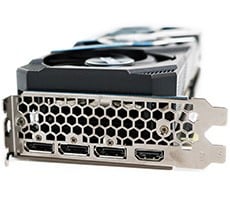ATi Radeon X700 XT - ATi's Answer To The GeForce 6600
HOW WE CONFIGURED THE TEST SYSTEM: We tested the ATi Radeon X700 XT on a Shuttle SB81 i915 chipset-based motherboard, powered by an Intel
|
| Hardware: Motherboard - Video Cards - Memory - Audio - Hard Drive - Optical Drive - Other - Software: Operating System - Chipset Drivers - DirectX - Video Drivers - |
Intel Shuttle SB81 Motherboard i915G Chipset ATI Radeon X700 XT GeForce 6600 GT ATI Radeon X600 XT GeForce PCX 5750 1024MB Kingston HyperX PC3500 CAS 2 Integrated SoundMax Audio Western Digital "Raptor" 36GB - 10,000RPM - SATA Lite-On 16X DVD-ROM 3.5" Floppy Drive Windows XP Professional SP2 (Fully Patched) Intel INF v6.0.1.1002 DirectX 9.0c ATI Catalyst v4.9 (equivalent) NVIDIA Forceware v65.76 |
|
We'll let the screen captures we took below speak for themselves because, frankly, there really isn't much to say. We were hard pressed to detect any perceptible difference in the screen captures below when running with the different Catalyst A.I. settings that are available in ATi's new drivers.
All of the screen shots that we've taken here, in Unreal Tournament 2004 and Doom 3, look virtually identical. Clearly, at least from our perspective, ATi's new Catalyst A.I. feature isn't sacrificing anything in terms of image quality. We'll also click through a few benchmarks with the standard mode and advanced mode on to show you the gains in performance that are available with this new feature.












